We are not yet done with our fierce friends, the Scorpions.
Last time, we learned that Horus, Son of Isis, is married to (at least) seven Scorpion Goddesses. From the little we have left to us of Their myths, it seems They are most often involved with healing poisoning or inflammation. Usually, Their husband Horus is the one They heal…and by extension, the human sufferer, who is identified with Him.
One of the interesting things about the power of these Goddesses is that, frequently, Their blood is involved in the healing. And it is very particular type of blood. It is the blood shed by the virgin Goddess on Her first night taking Horus to Her bed.
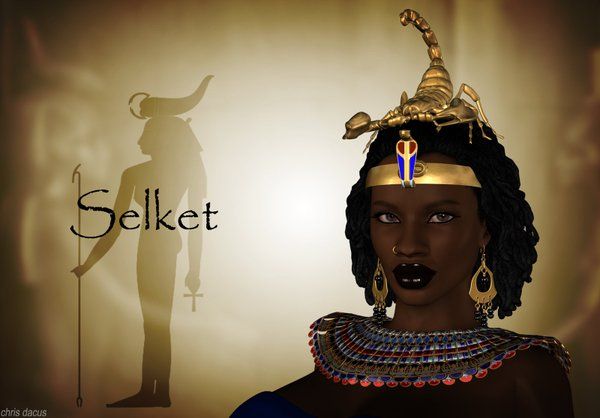
A quite obscure (as in not-very-understandable) spell in the collection of anti-scorpion-sting spells from the Chester Beatty papyri refers to the blood of (probably) Sepertuenes Who “tells Her name to Horus every three years, the hidden blood being on Her thighs since Horus opened [i.e. had sex with] Her.”
Horus could also be invoked by the blood of another of His most-well-known wives, Ta-Bitchet (alternatively, Tabitchet, Ta-Bitchet, Ta-Bithet, Bithet, and maybe, Biyet):
Hail to You, Horus, by the blood of Tabitchet; Horus opened Her on a bed of ebony. Biyet [Bitchet?], the Lady of the Cobra, a Daughter of Pre! I will recite/enchant against her as a hero. A falcon is to the right, another one to the left of Her. However, I will escape. Horus, hail to You!
Borghouts, spell 97 (my capitalization)
Here, it looks like Horus is invoked by the blood of His wife to help the sufferer repel a cobra bite (?) in a heroic, Horus-like fashion. The venom from both snake and scorpion are often equated, so a Scorpion Goddess is equally adept at drawing out the poison of a snake as She is at commanding a scorpion’s venom to leave the body.
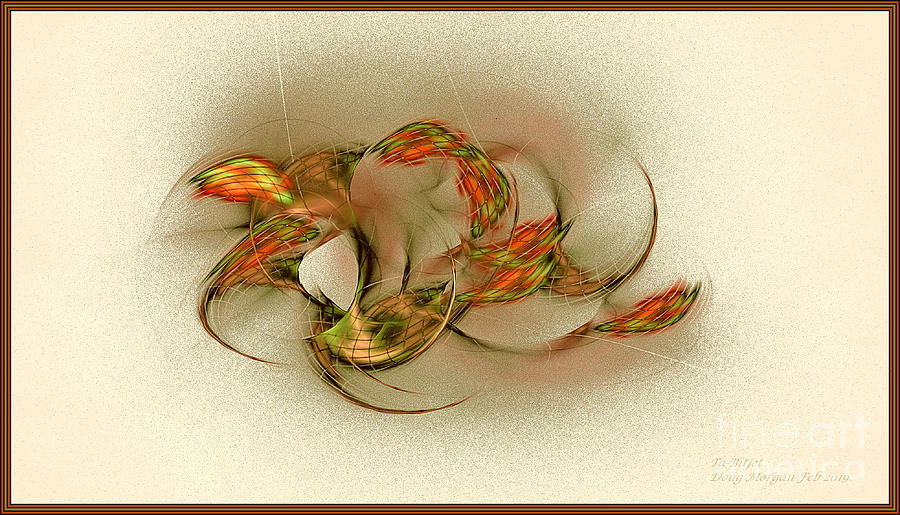
In the next spell in Borghouts, 98, the sufferer invokes Bitchet, the wife of Horus, by the “blood of the first childbirth of the uraeus” and by declaring himself to be Horus. In Spell 99, Bitchet is called a Daughter of Osiris. (So are She and Horus half-siblings?)
Here’s another interesting spell invoking two of Horus’ most well-known Scorpion Wives:
Spell for Enchanting a Scorpion
O Mistress of [. . .], skin-wearer who has come forth from Heliopolis, the Daughter of the Hooded One [or “She of the Nemes Headdress;” possibly equating the hood of a cobra with the Egyptian nemes headdress], without my adding Sepertuenes, She to Whom the Earth Petitions, recite, pray for this young Horus that he might go off recovered to his mother, by the blood of Ta-Bitchet since Horus opened Her in the evening. Seal the mouth of every reptile, O Ta-Bitchet, Shining of Face, Mn.t [which Ritner has as “so-and-so”], O wife of Horus. May Horus live, being healthy/recovered.
Borghouts, spell 101; translations compiled from both Borghouts and Ritner
This one is a bit confusing. But it looks like Tabitchet is invoked by Her own blood to heal the sufferer, who is identified with Horus, Her husband. There is disagreement among the translators where the spell says, “without my adding Sepertuenes.” Above is Ritner’s translation, while Borghouts has it as “I will not leave out Sepertunenes.” Personally, if I were doing this spell, I would add Her, thereby including both of Horus’ powerful wives in this Working to heal a human “Horus.”
There’s also the Egyptian word mn.t, which Ritner translates as “so-and-so.” Does that mean there are a string of common epithets of Tabitchet that we are supposed to know and to add to the spell…similar to how the PGM instructs the magician to “add the usual”?
Now, you may have noticed that the Scorpion Goddesses’ blood is either first-sex-hymen blood or first childbirth blood. This is very powerful and life-giving blood. Another kind of female blood, menstrual blood, had its place in magic, too…and is particularly connected with Our Goddess Isis. See more about that here.
Given those connections, you will not be entirely surprised to see that the Scorpion Goddesses are also associated with childbirth. And that the seven Scorpion Goddess Wives of Horus may also be connected to the Seven Hathors.
The seven Hathors are generally considered Goddesses of Fate, like the 13 faeries in the Sleeping Beauty tale, Who arrive at a birth to foretell a child’s fate. They are especially found in Late Period temples, where They attend the birth of the Divine Child honored in that particular temple, often but not always, Horus. Like the Scorpion Goddesses, the Seven Hathors are also seven Daughters of Re and are invoked in anti-poison spells—as well as in love spells—as you would expect since They are Hathors. Hathor Herself is also associated with scorpions. On the Metternich Stele, Hathor—identified by the sistrum naos on Her head—is shown subduing frightening handfuls of serpents and scorpions.
Professor Robert Ritner has suggested that these seven Hathors and the seven Scorpion Wives of Horus—due to Their seven-fold nature and connection with both birth and poisons—may be the same Goddesses, or at least highly-related sets of seven. (On a healing stele, Tabitchet receives the Hathorian epithet “the Golden One.”) Further, Ritner thinks They are connected with the seven maidens in the PGM text of the Charm of the Syrian Woman of Gadara that we looked at last week.
And he also suggests that the seven scorpions that accompany Isis to Chemmis (Panopolis; today Akhmim) may also be the same Goddesses. The Isian scorpions, however, are disguised through use of magical names. As you may remember, in the tale of Isis and the Scorpions, Isis and Her girls are heading to Their refuge in Chemmis. There is another text in which the Scorpion Wives are addressed as “Lady of Chemmis.” So Isis and Her scorpions and the Scorpion Wives of Horus can both be tied to the same place. Ritner has suggested that the names given in the story (Tefen, Befen, Matet, etc.) are magical names of the wives of Horus. He’d need to explain that a bit more to me, but nonetheless, it’s interesting.
Maybe Horus knew these Scorpion Goddesses since His nursery days and then fell in love with Them as He grew. (This would be similar to the Greek Dionysos. His nurses took care of Him while He was a Child God, then accompanied Him as Maenads, though not wives, as an adult.)
There are two interesting Coptic spells, which are much later than the spells we have looked at so far, which involve Horus, Isis, and seven maidens. One seems to be a spell to cure insomnia and the second is definitely an erotic spell. The papyri in which they are found are known as the Schmidt papyri. In them, Horus is complaining to Isis that seven maidens—perhaps a much later version of our Scorpion Goddesses?—are ignoring Him when He so clearly wants them.
Here’s the first one, the insomnia cure, though the translators also wondered whether it was originally an erotic spell:
Hear Horus crying, hear Horus sighing: “I am troubled, poured out/melted for seven maidens, from the third hour of the day until the fourth hour of the night. Not one of them sleeps. Not one of them dozes.
Isis His mother replied to Him within the temple of Habin [near Hermopolis, where a temple and priest of Horus are mentioned as late as the 7th century CE] with Her face turned toward the seven maidens and seven maidens turned toward Her face: “Horus, why are you crying, Horus, why are you sighing?”
“Do you wish that I not cry, do you wish that I not sigh, from the third hour of the day until the fourth hour of the night, while I am poured out/melted for seven maidens, not one of whom sleeps, not one of whom dozes?”
Schmidt 1 papyrus, my capitalization
This spell goes on to give some instructions for sleep and connects it to some angels who made Abimelech (one of several Philistine kings in the Hebrew bible) sleep. That, though, is not the point. The point is Horus sighing and crying over those seven maidens.
The second Schmidt papyrus may refer to the same seven maidens. In it, Horus is complaining to Isis that He “found seven maidens upon a spring of water. I desired, but they did not desire. I agreed, but they did not agree.” Then this Horus-Isis dialog is used to segue into a spell for a love-lorn seeker who says he desired a woman, but she did not desire to receive his kiss.
In a lecture on this topic, Ritner suggests that while Horus was longing for these seven Scorpion Goddesses, He did the unwise thing and amorously lept on top of Them. They—predictably—stung the crap out of Him. Thus, His need of healing. Yet again.
And so, perhaps, a more ancient story of the yearning-but-stupid Horus evolved into this erotic spell where ‘He desired, but They did not desire.’
Well, we have still not covered everything that these Scorpion Goddesses have to tell us…so, I guess, Part 3 is for next time.
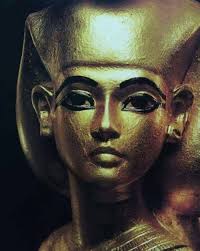
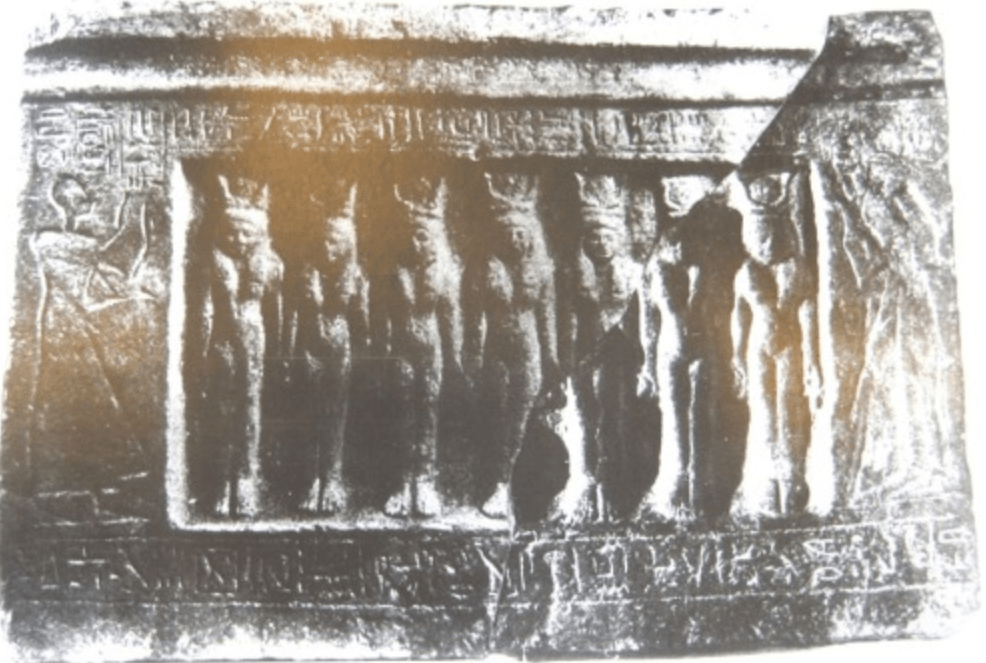


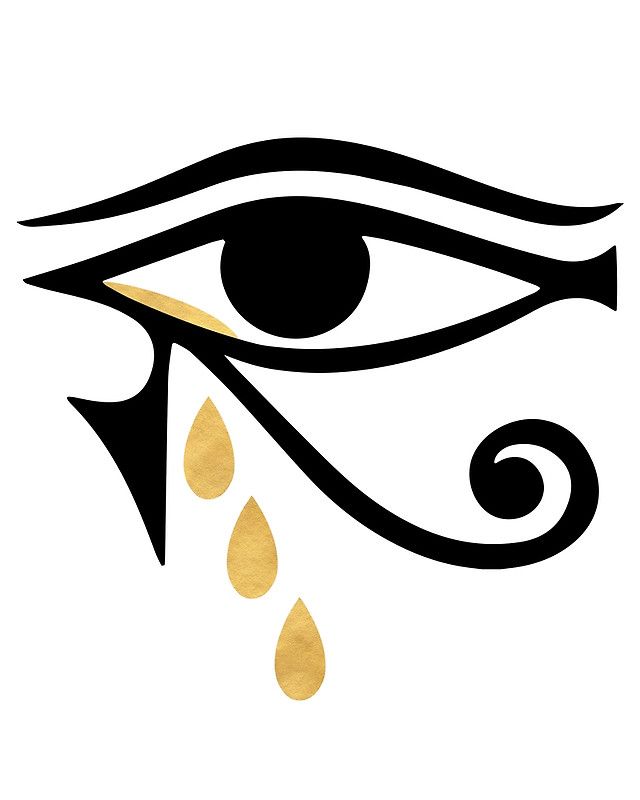
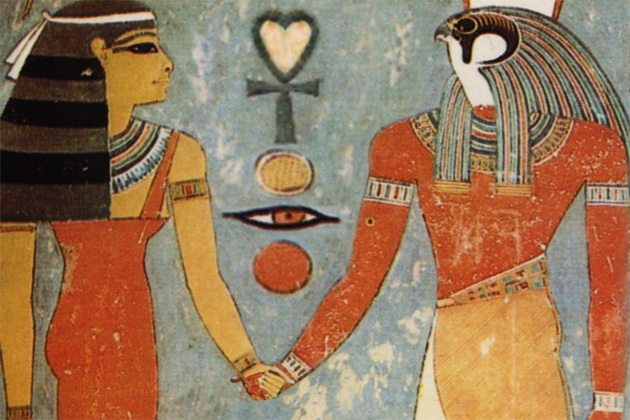
This is absolutely fascinating! The first time I read the story of Isis and the Seven Scorpions, I was immediately reminded of the role-call of names that Tolkien gave to his Dwarves! Tefen and Befen would have fit right in, not to be disrespectful of the goddesses! This series of posts has really sparked my interest. I just ordered Ritner’s book and am ready to dive right in.
Reblogged this on Sanctuary of Horus Behdety.